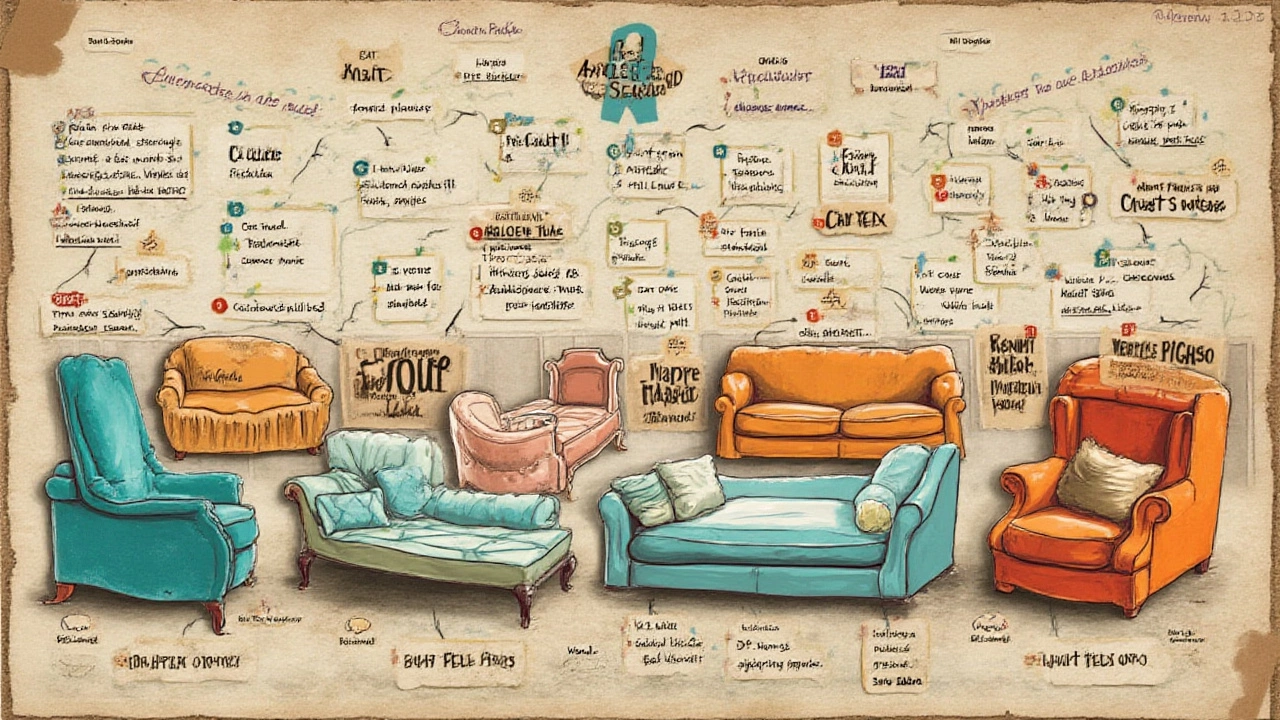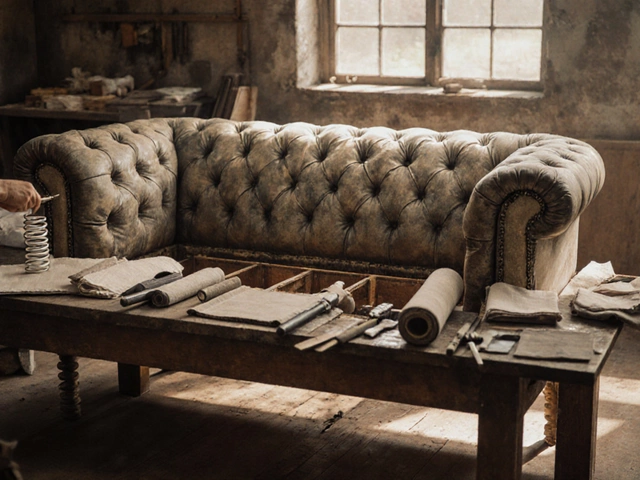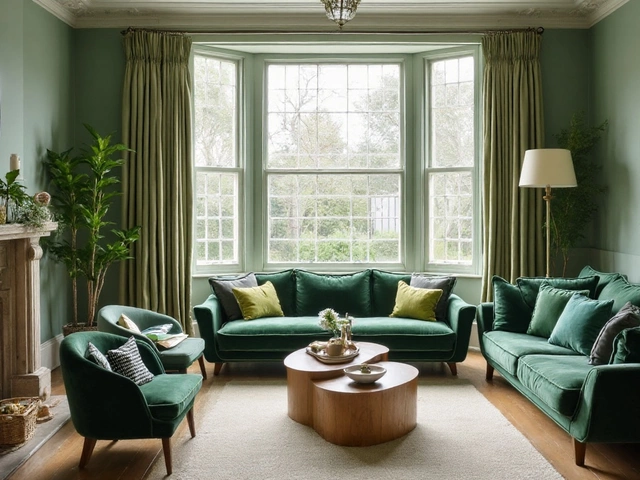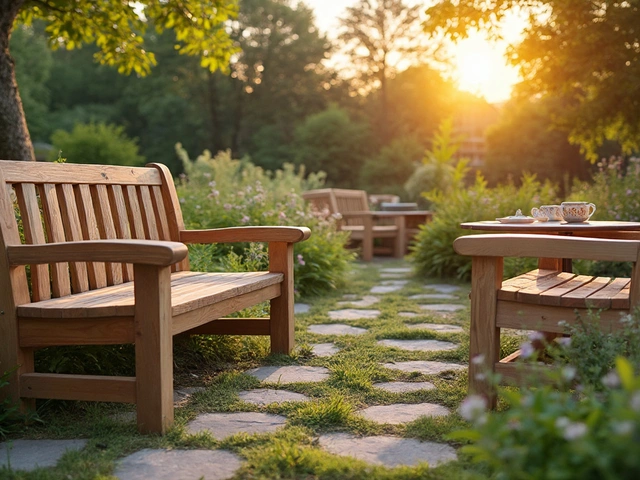 21
Jul,2025
21
Jul,2025
Ever been stuck at a furniture store, totally lost because you’re looking for a “sofa bed,” but all you hear are words like “sleeper sofas” or “futons?” It’s honestly a maze. People toss around a handful of names for this clever invention, and it can mess with your head if you’re shopping or even just chatting design. The world doesn’t always agree on one term, and sometimes the same word means different things in different countries. Let’s unravel all the names sofa beds go by, and why this piece of furniture is one of the most popular multitaskers out there.
All the Names a Sofa Bed Goes By
First off, a sofa bed isn’t just called by one name. You’ll hear a bunch of different names, and sometimes, they refer to slightly different versions—or the same exact thing, depending on where you are. The term sofa bed itself is the most standard in the US and UK, but what else do folks call it?
The main alternatives include “sleeper sofa,” “pull-out couch,” “pull-out bed,” “convertible sofa,” and, in some cases, “futon.” In the UK and other parts of Europe, you might even hear “sofa-bed” with a hyphen, or even “bed settee.”
Let’s break these down a bit. A sleeper sofa is most popular in North America, and it typically refers to a sofa that hides a whole mattress inside the frame that you pull out, usually folded in thirds. Pull-out couch is basically the same thing as a sleeper sofa—just a different way to say it. If you ask for one at an American store, they’ll likely nod and show you to the right section.
Then, there’s the convertible sofa, which means any sofa you can convert into a place for sleeping—no built-in mattress required. Think of the old-school click-clack sofas that fold down flat. You press till it clicks, and it “clacks” open into a bed. The term “futon” comes from Japanese design, and while in Japan it refers to a roll-up mattress you toss on the floor, in the West it’s usually a wooden or metal frame with a thick cushion that folds into a couch or folds out into a bed—not really hiding the mattress but re-configuring it.
Here’s a quick cheat sheet:
- Sofa bed: Any sofa that doubles as a bed, especially when the frame conceals a foldaway mattress.
- Sleeper sofa: A sofa with a built-in, hidden mattress that pulls out.
- Pull-out couch: Same idea as a sleeper sofa—a couch with a foldable mattress inside.
- Convertible sofa: A sofa that can be reconfigured into a bed—may or may not have a pull-out mattress (think click-clack designs).
- Futon (Western style): A foldable frame plus a thick, foldable mattress.
You might also come across “bed couch,” “bed sofa,” or “daybed,” though the last one is technically a single bed dressed up with back and side panels, more for lounging than for hiding a queen-size sleeper inside.
If you’ve ever looked through vintage furniture catalogs, you’ll see the evolution of sofa beds through the decades, with the first patent for a folding bed inside a couch going to Leonard C. Bailey—he called it an “insect-proof folding bed”—way back in 1899.
No matter what you call it, people have always needed a way to turn their living room into a guest room on short notice. The appeal is universal: extra sleeping space without sacrificing square footage.

Why the Sofa Bed Is a Living Room Hero
The appeal of the sofa bed goes way beyond its many names. This is a solution to everyday problems—especially if you’ve got a one-bedroom apartment, need a guest bed for the holidays, or want your home office to transform into a sleep zone for family. It’s not just a piece of furniture; it’s a secret weapon against clutter, a lifeline when friends visit unexpectedly, and probably the most efficient way to make your space work harder without sticking another plain old mattress in the corner.
Let’s talk about its rise in popularity. When tiny homes and urban studios made a comeback with city living, the sofa bed had a rebirth moment. Thanks to new technology and materials, those saggy, spring-poking sleeper sofas of the ‘80s are mostly gone. Now, manufacturers use memory foam, no-sag springs, or even air mattresses that you inflate with a switch—and, boy, does it make a difference. Some high-end sleeper sofas go for thousands, offering everything from elegant fabric finishes to proper queen-size beds with gel-infused mattresses.
And the designs are getting smarter. You’ll find sectional sleeper sofas with hidden storage for bed linens, L-shaped models for extra seating, or modular pieces you can rearrange; there are even sofa beds with built-in charging ports and USB outlets. They’re not just about practicality—the new styles and fabrics look just as good as any regular sofa.
If you’re a frequent host, you know the struggle when guests drop in and you’re left hunting for that old air mattress. This is where the sofa bed shines. Instead of digging through closets, you simply pull a handle or push a backrest. Kid sleepovers? Sorted. Napping in front of the TV on a lazy Sunday? Done. Some families even use sofa beds as their main couch because it’s simply more comfortable and adaptable than old-school, firm couches.
One huge tip: always check the mechanism before you buy. In-store, ask to see how it folds; try pulling it out yourself if you can. Good sleeper sofas should glide open in a smooth motion and have sturdy hinges. Flimsy parts will wear fast, and you don’t want a bed collapsing under a guest in the middle of the night.
Bedding is something people don’t always consider. Sleeper sofas often need special sheets because their mattresses are thinner than standard beds, and queen or twin sheets don’t always fit. Ask for the mattress size and buy sheets designed for sleeper sofas—you’ll thank yourself later.
Maintenance is easy—vacuum under the cushions, spot-clean stains, and check the joints a couple of times a year. If you go with leather or faux leather, wipe it down with a mild solution to keep it supple and crack-free.
Remember, most guests won’t expect the Ritz when they sleep on a sofa bed, but they will expect it to be clean, comfortable, and not full of crumbs or lumpy springs. A quality topper can level up even a basic sleeper sofa, and you can stash it easily in the under-seat compartment if your sofa bed has one.
If you’re renting your home short-term or running an Airbnb, a sofa bed can bump up your listing to ‘sleeps four’ instead of two, attracting more travelers. Just make sure to mention exactly what size of bed it turns into—double, queen, or full—since expectations run high when people are booking online.
Sofa beds also have some downsides, which are worth keeping in mind. They’re heavier than regular sofas, and budget options can be harder or have awkward bar placements inside. But with careful shopping, most downsides are fixable or avoidable—you truly get what you pay for with sofa beds.

Tips for Choosing and Using Your Sofa Bed
So, picking out a sofa bed isn’t rocket science, but you should know a few tricks to avoid regrets down the line. The first thing: measure your space. Not just the area for the sofa, but how much room you’ll have once it’s completely opened up. People often forget this, leading to hilarious (and not-so-funny) moments when the bed blocks a door or wedges into a wall.
Next up, check the opening mechanism. For small rooms, a click-clack or convertible sofa is often more practical because it opens forward and doesn’t need much extra space. Pull-out couches or sleeper sofas with full frames usually need more clearance; get the exact measurements before you order.
Mattress comfort is a make-or-break point. Some mattresses are less than four inches thick—not exactly cloudlike. If you plan to sleep on it often yourself, find models with memory foam, gel foam, or innerspring mattresses. Some even let you swap out the included mattress, so you can upgrade it later.
Don’t overlook fabric choices. If your sofa bed is in a high-traffic area, go for stains-resistant and durable upholstery like microfiber, performance fabric, or vegan leather. Families with pets will want removable, washable covers, or at least a way to spot-clean easily.
If you’re hoping to host couples, double-check the bed size. Some “full” sofa beds are a tight squeeze where two adults will be shoulder-to-shoulder. Queen and king options are out there, but measure twice since they get wide fast and may not fit through narrow doors on delivery day.
A quick breakdown of styles you might spot while browsing:
- Traditional pull-out sofa beds: Stylish and classic, often with rolled arms and plush cushions. The bed frame folds inside.
- Modern convertible sofas: Minimalist, easy to fold down, sometimes with adjustable headrests or armrests.
- Futons: Light, budget-friendly, and ideal for college apartments or spare rooms.
- Sectional sofa beds: Great for big rooms or open-plan spaces, with seating for a crowd and a bed hidden in one section.
No matter which you pick, ask about the warranty. Moving parts can wear out, even on high-end models. Six to twelve months of coverage for mechanical parts is standard, but some brands go longer.
If you’re designing a multipurpose space—like a combo guest room and home office—use the sofa bed as the anchor. Pair it with nesting tables or a storage ottoman that’s easy to move, so guests aren’t tripping over furniture at bedtime. Built-in USB ports or shelves can make the setup feel a lot more like a proper bedroom.
One more tip: rotate the sofa bed mattress or air it out now and then if it gets little use. This helps with lingering odors or that “stored” smell, especially if pets are around or if the bed hides inside the couch for months at a stretch. A spritz of fabric refresher and keeping sheets on hand can make hosting feel a lot less stressful.
People sometimes wonder if sofa beds last as long as regular couches. A decent one will, especially if the frame is hardwood or quality metal, and you avoid flopping onto it with all your weight. Treat the mechanism gently and you’ll rack up years of cozy sleepovers, lazy weekend naps, or movie marathons from the comfort of your living room.
So, whether you call it a sofa bed, a sleeper sofa, or a pull-out couch, you now know you’re talking about the same convenient, transforming hero. The name may change depending on who you ask, but the value this piece of furniture adds to your home stays the same—making small spaces more liveable, guests more comfortable, and your lifestyle just a little bit easier.




